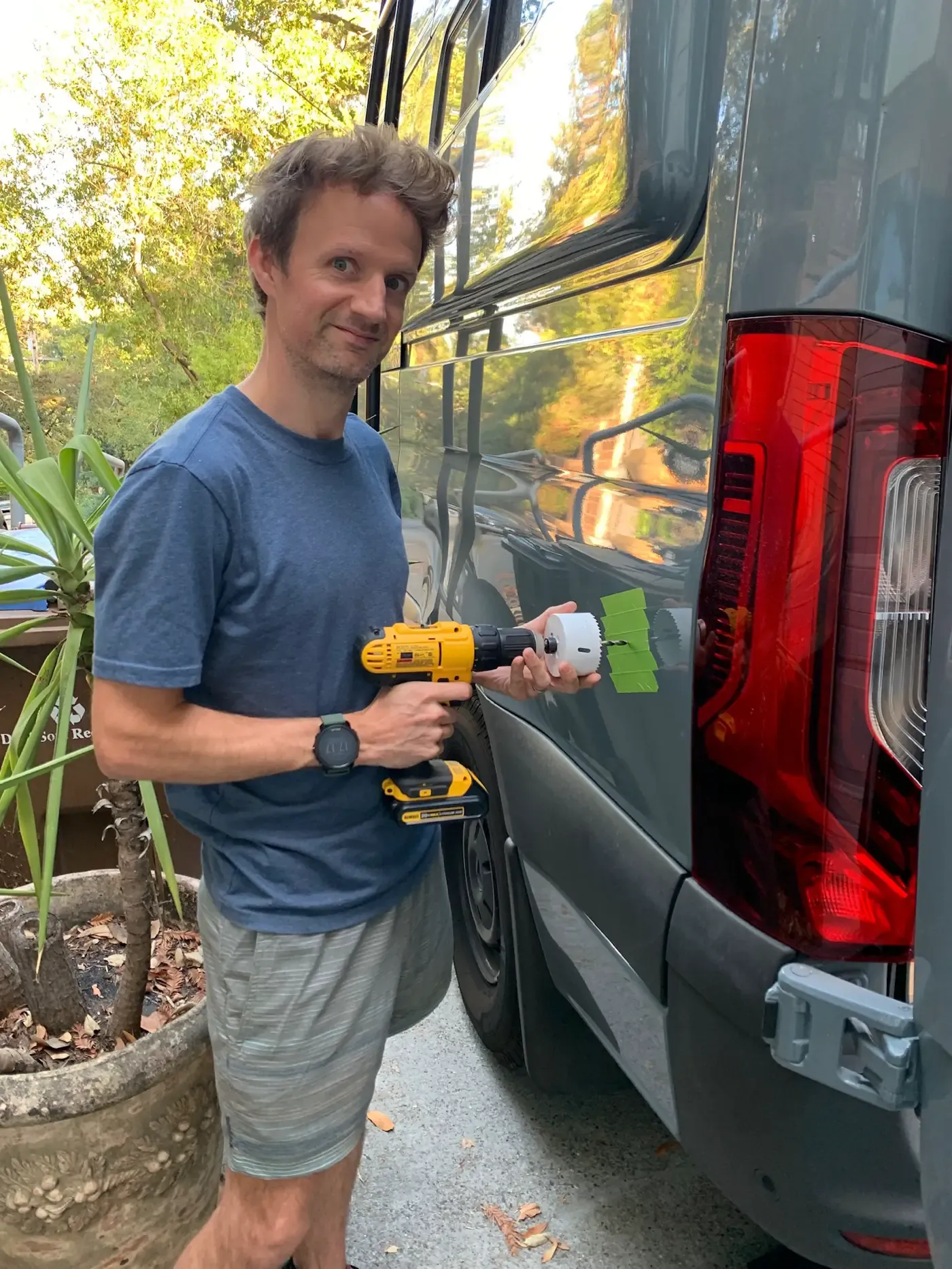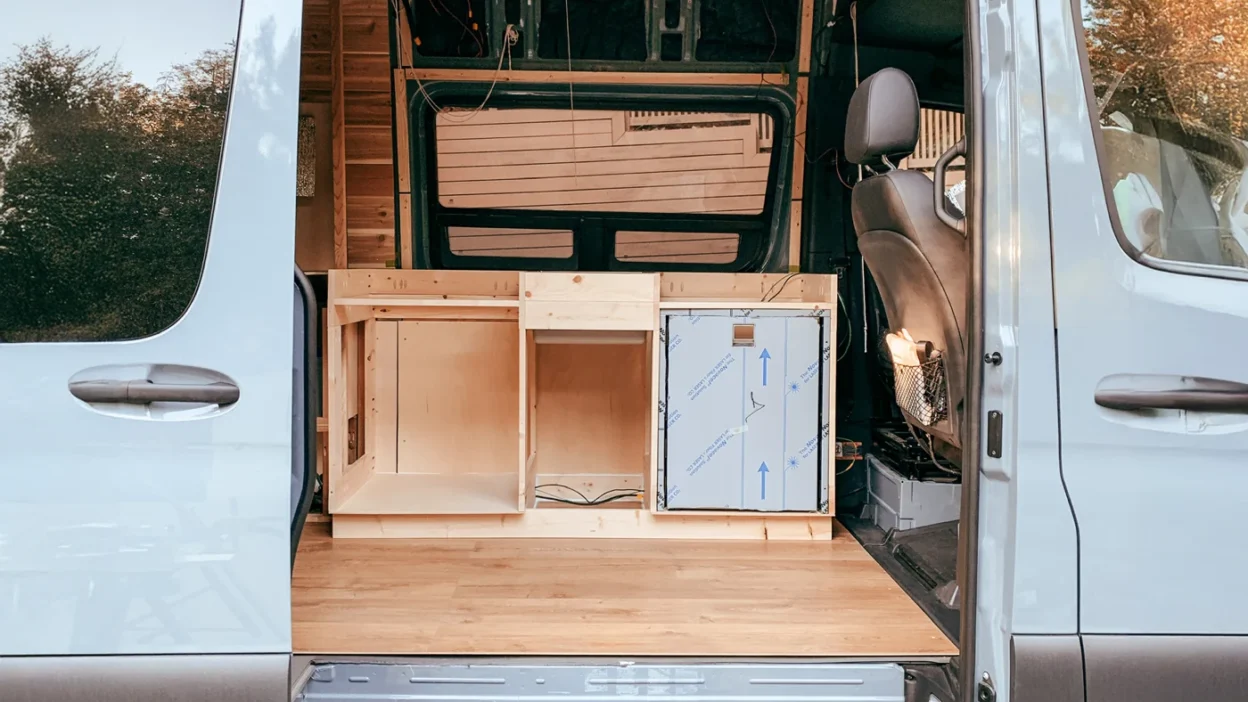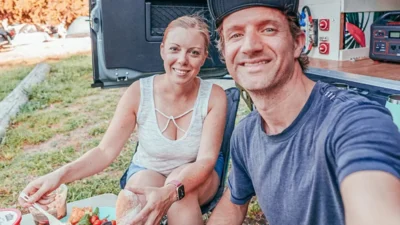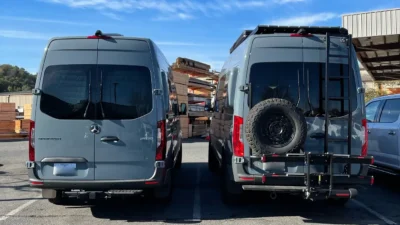If you’ve decided that van life is something you want to pursue — even just for a season — then one of the biggest decisions you’ll make is how to get your van.
Should you buy one that’s already converted and ready to roll? Or start with an empty shell and build it yourself? Do you really need a Sprinter van, or are there other options that cost less but still work great?
This part of our Van Life series will help you make that decision with confidence, based on your lifestyle, skills / passion, budget, and timeline.
Van Life Manual – Table of Contents:
- Is this lifestyle really for you?
- Choosing or building your camper van ← You are here
- How much does van life cost – and can it save you money?
- Full-time vs. part-time van living – How to choose?
- The unglamorous stuff: parking, showers, toilets & more
- Finding community and staying connected
Buying vs. building your camper van
There’s no universal “right” way to start van life — but there is a right way for you.
It depends on your budget, how much time you’ve got, your comfort level with tools and projects, and whether you’re trying to hit the road fast or slowly build your dream setup.
🔧 Option 1: Build it yourself (DIY conversion)
This is the path for tinkerers, creatives, budgeters, and people who want full control over their space. This is our prefered route – and the one we took ourselves.
Starting with an empty cargo van gives you a blank canvas to design something that’s truly tailored to your lifestyle.
Pros:
- You control the layout, look, and functionality
- You’ll save a lot of money (especially if you do the labor)
- You’ll learn everything about your van’s systems — super helpful when (not if) something breaks
Cons:
- Time-consuming (builds can take weeks or months)
- Requires tools, space, and skills (or a willingness to learn on the fly)
- Mistakes can be expensive if you guess your way through it
🚐 Option 2: Buy a pre-converted van
Buying a ready-to-go camper van (whether from a professional builder or another van lifer) is ideal if you want to get on the road ASAP, or you don’t want to worry about plumbing, wiring, and cutting giant holes in your vehicle.

Pros:
- Way faster — hit the road within days
- Less technical stress (someone else has figured it all out)
- Easier resale down the road if you outgrow it
Cons:
- More expensive upfront
- You may need to compromise on layout or features
- You won’t know the build as intimately if something fails, and you wont truly know the build quality
What kind of van should you choose?
You’ve probably seen a lot of Mercedes Sprinter vans out there — and yeah, they’re super popular. But they’re not the only good vans for conversion.
Here’s a quick breakdown of the most common van options for conversions:
Mercedes Sprinter
The “classic” van life rig – this is what we used for our first build. Sprinters are popular for their high roof, long wheelbase, 4×4 options, and overall reliability. You can stand up inside the high-roof ones, and they’re well built.
- Pros: High roof available, fuel-efficient diesel engine, tons of aftermarket support
- Cons: Expensive, parts and service can be pricey, especially in rural areas
Ford Transit
A close rival to the Sprinter, with easier maintenance and a growing community of builders. You’ll find these in both gas and AWD options.
- Pros: Widely available parts, easier to repair, available in AWD, more reasonably priced than the Mercedes Sprinter
- Cons: Not as fuel-efficient, roof height isn’t quite as generous
Ram Promaster
The budget-friendly, boxy option. These vans have straight walls and a wide build, making them a favorite for DIY converters who want usable space.
- Pros: Cheapest of the three, super easy to build out, wide interior
- Cons: No AWD, lower ground clearance, less rugged look
Minivans and other small vehicles
If you’re going ultra-minimal or just testing out van life part-time, smaller rigs like minivans, Honda Elements, or even SUVs can work surprisingly well.
- Pros: Stealthy, cheap to buy and run, park anywhere
- Cons: Very limited space, less comfort for full-time use
Why Sprinter vans are so popular
If you’ve seen van life content on our other Instagram account called @campersandcamping – you’ve seen Sprinters. There’s a reason they’re everywhere:
- They’re big, but not too big — you can still park in regular spots
- They have excellent fuel economy for their size
- They have a fantastic turning circle, with optional extras that makes parking them a breeze
- They look clean and professional (great for stealth camping)
- And there’s a huge ecosystem of parts, upgrades, and inspiration online
But remember: you don’t need a Sprinter to live the dream. Many people hit the road in humble Promasters or well-loved Transits and never look back.
Next up in the series…
In Part 3, we’ll break down how much van life really costs, how to budget realistically, and how people fund their life on the road.
We’ll talk savings, side hustles, and how to stretch your dollars while still enjoying the adventure.
👉 Head to Part 3: How much does van life cost?



